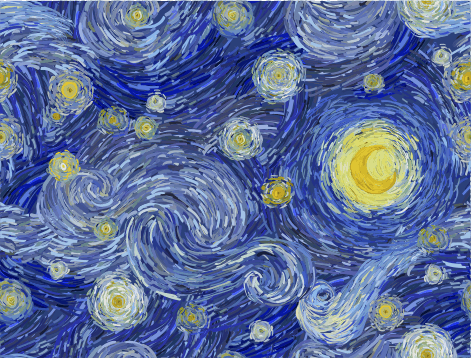There are tons of different painting mediums that have been used throughout history and depending on the time period, some mediums were more popular than others. During Vincent van Gogh’s time, would he have used board for his paintings?
Van Gogh painted on board (also known as panel) but not very frequently and mostly for practice. His main medium for painting would be canvas and most of his famous paintings are oil on canvas. Painting on panel was a method used more frequently before van Gogh’s time. It was used mostly in the renaissance to late middle ages.

You can read more below about the difference between painting on board and canvas, van Gogh’s painting techniques, and if any of his famed works are on board.
Painting on Board Vs. Canvas
As mentioned above, van Gogh preferred to have his finished works on a canvas medium over a board or panel. This is probably because the canvas was becoming the more popular medium to use during his lifetime.
There are quite a few differences between painting on a canvas versus painting on a board. The first would be how they are constructed.
Canvas is a piece of cloth that is stretched over a wooden frame and stapled or nailed into place. Since it is a piece of cloth, there are fibers that are often visible in the painting unless the artist uses thick layers of paint.
A board or panel is a wood surface that is sometimes attached to a frame and used as the medium for painting. Wood can be more useful to some artists because it does not offer the same issue of fibers, but it may cause extra work like sanding it to get the right surface texture.
Another point that was made by painter Ashley Hurst in an article for The Virtual Instructor, is that when painting large-sized pieces or doing field paintings a panel can be very cumbersome and too heavy to use.
Van Gogh did a lot of his paintings on-site and that would be another reason why he would use a canvas instead of a panel.
One other difference between the two mediums would be that depending on the board type, the painting could become discolored over time. The board had an effect on the lasting coloration of the paintings.
Of course, this is something that too much exposure to light and improper storage can do to any painting.
Van Gogh’s Painting Techniques
As one of the most prolific post-impressionist painters in the world, you have to wonder what kind of techniques van Gogh employed to create stunning paintings like The Starry Night and The Red Vineyard. Well, he did employ some secret techniques.
He had initially learned about painting from Constant Cornelius Huijsmans while in middle school in Tilburg, Netherlands. His teacher encouraged van Gogh and the other students to abandon technique in order to capture the impressions of objects.
Eventually, Vincent established the use of techniques like compositions and composition sketches to create his paintings. Composition was when he would first put in the verticle and horizontal lines of the painting for guidance and marking a “C” for where he wanted the central focal point to be.
He would use these lines to actually point toward the center of the painting. Van Gogh also did composition sketches which is a common method used by many artists.
A composition sketch is when an artist draws out a quick sketch in charcoal or pencil that will be what they use as a reference for a later painting. Van Gogh used this technique until 1888 which was when he decided to abandon the popular tradition.
He wanted to paint on-site instead. The decision to paint on-site led to him possibly using what is known as a perspective frame.
A perspective frame creates an outlined box of the area to be painted. This makes it easier to create precise and accurate paintings.
Watch the below video to gain a more in-depth insight into van Gogh’s painting technique and style.
Van Gogh’s Works on Board?
Due to his methods, Vincent van Gogh used canvas almost exclusively. Most of the works that you find on a panel or a board are his pieces that were originally done on paper and then pasted onto the board.
His early works were mostly composed of watercolor on paper on panel. He did use other mediums as well, but watercolor was where he began.
Looking through his earlier work you will be hardpressed to find a piece he actually painted on a board. His later works are almost exclusively oil on canvas, this includes pretty much all of his most famous pieces.